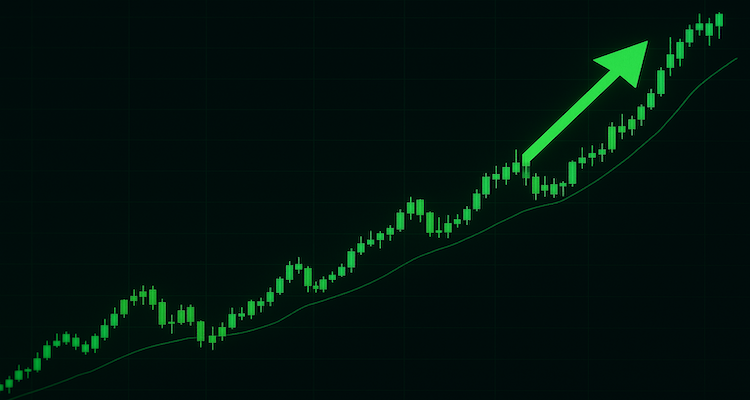Cautious Global Markets Eye AI Stocks and U.S. Data Shift
Asian stocks opened the week on edge as traders brace for U.S. earnings, delayed jobs data, shifting rate expectations, and heightened pressure on AI-driven markets.
A Tepid Start to a High-Stakes Week
Global markets kicked off the week on a nervous note as investors assessed a crowded slate of economic data and corporate earnings that could determine whether the recent tech-fueled rally still has legs. With Wall Street’s expectations for a near-term U.S. rate cut fading fast, Asian equities opened Monday with little conviction, reflecting growing doubts about how long artificial intelligence–linked stocks can keep soaring.
Rate Cut Hopes Lose Momentum
Just days ago, traders were pricing in better-than-even odds of a Federal Reserve rate cut in December. But a chorus of more cautious, and in some cases hawkish, Fed voices has dramatically curbed that optimism. Market-implied probabilities plunged from more than 60% a week ago to around 40% on Monday, dragging on risk appetite across major equity markets.
Despite the jitters, U.S. stock futures showed modest resilience, with S&P 500 futures ticking 0.3% higher in early trade.
Across the Pacific, however, Asian markets struggled to find direction. Japan’s benchmark Nikkei opened flat, but selling pressure mounted elsewhere in the market, particularly among tourism and retail stocks. A diplomatic rift with China triggered a travel warning from Beijing, prompting significant selloffs in companies tied to consumer-facing industries.
Asia Feels the Strain
Japan’s Tourism and Retail Sectors Hit Hard
China’s advisory urging its citizens to avoid traveling to Japan slammed shares of several key Japanese retailers. Department store giant Isetan Mitsukoshi and beauty powerhouse Shiseido each saw their stock tumble roughly 10% as investors braced for weaker inbound tourism and softer retail sales.
Australia’s Index Touches Four-Month Low
In Australia, a sharp 0.7% decline in BHP hurt the broader market, pulling the ASX to a four-month low. The selloff followed a ruling by Britain’s High Court that found the mining giant liable for damages linked to a catastrophic dam collapse in Brazil, raising the specter of prolonged legal and financial fallout.
Wall Street Rebounds-But Only Slightly
Meanwhile, U.S. markets attempted to steady themselves after a rough Friday session. The S&P 500 ended the day slightly lower, while the Nasdaq managed to eke out modest gains. The 10-year U.S. Treasury yield, which jumped sharply late last week, held at 4.156% in Monday’s early Tokyo trade, reflecting persistent tension over inflation and rate uncertainty.
U.S. Jobs Report: Delayed Data, Heightened Scrutiny
One of the week’s most anticipated releases, the September U.S. jobs report arrives Thursday, but comes with a caveat: the data is delayed and possibly outdated. Private-sector surveys have already pointed to a cooling labor market, leaving analysts unsure how much new information the official report will actually provide.
What may matter more is how the Federal Reserve chooses to frame the numbers. With 19 separate speeches from Fed officials scheduled this week, every comment will be parsed for clues about whether the central bank is leaning toward caution, or doubling down on its inflation fight.
Two key voices, Kansas City Fed President Jeffrey Schmid and Dallas Fed President Lorie Logan, struck a hawkish tone late last week, signaling that a December rate cut may not be on the table. Their stance reignited concerns over policy tightening at a time when growth may already be slowing.
BNY’s head of markets macro strategy, Bob Savage, offered a sobering assessment, noting that a mix of softening jobs data and stubborn inflation risks rekindling fears of stagflation, an unwelcome word now creeping back into financial conversations.
Japan’s Economy Contracts as Policy Pressure Mounts
Fresh data from Tokyo brought additional worries: Japan’s economy contracted for the first time in six quarters, weighed down in part by the ripple effects of U.S. tariffs. The downturn coincides with early signals that newly appointed Prime Minister Sanae Takaichi is preparing an aggressive fiscal stimulus package.
According to a weekend report in the Nikkei, the government is considering spending 17 trillion yen (approximately $110 billion) as part of Takaichi’s first major economic initiative. While such a package underscores her commitment to growth, it also puts renewed pressure on Japan’s already fragile currency.
The yen slipped to 154.54 per U.S. dollar, keeping traders on alert for potential government intervention. Bond markets reacted sharply as well, sending 10-year Japanese government bond yields to their highest level since 2008.
Some analysts warn that if investors lose confidence in Japan’s fiscal discipline, markets could experience turbulence reminiscent of Britain’s recent meltdown, when signals of a retreat from planned tax hikes spooked investors and sent stocks, bonds, and sterling tumbling.
Nvidia and U.S. Retail Giants Take Center Stage
Earnings That Could Shape Market Sentiment
In the U.S., earnings season ramps up with reports expected from Home Depot, Target, Walmart, and most closely watched of all, Nvidia. The chipmaker has become the face of the AI boom, and its financial performance carries outsized symbolic weight for the broader tech sector.
Market strategist Orton said investors are bracing for a pivotal moment. If Nvidia’s results or outlook fall short of the sky-high expectations baked into its valuation, the ripple effect could hit the entire constellation of AI-focused stocks.
The stakes are enormous. Since the debut of ChatGPT in late 2022, Nvidia’s share price has skyrocketed more than 1,000%, including a 40% surge this year alone, pushing the company past the $5 trillion valuation mark in recent weeks.
Global Currency and Commodity Moves
The U.S. dollar strengthened slightly against major currencies, keeping the euro pinned near $1.1607. Commodity markets also softened in early trade:
-
Gold hovered at $4,084 per ounce, struggling to recover from Friday’s drop.
-
Brent crude slipped 1% to $63.78 as energy markets assessed demand signals from Asia.
-
Bitcoin, increasingly viewed as a barometer for liquidity and tech-sector sentiment, extended its recent slide. The cryptocurrency is coming off its steepest weekly decline since March, losing more than 10% and trading around $94,717 on Monday.
What Investors Should Watch
This week could prove pivotal for gauging whether global markets can maintain their momentum or if cracks in the foundation will widen. Three themes stand out:
-
Interest Rate Expectations:
With Fed officials dominating the week, any shift in tone could reprice markets quickly.
-
AI Growth Narrative:
Nvidia’s earnings will either reinforce or challenge the belief that the AI boom can continue accelerating.
-
Fiscal Risks in Asia and Europe:
Concerns over Japan’s stimulus ambitions, and recent fiscal anxieties in the U.K. could spur renewed volatility in global bond markets.
Investors appear increasingly sensitive to economic crosswinds. Even a single data point or policy comment could tip the balance in a climate where confidence is fragile and valuations in some sectors remain stretched.
A Market on Edge but Still Moving Forward
As the new week unfolds, markets are balancing hope and hesitation. With critical U.S. data, influential earnings reports, and shifting monetary landscapes converging at once, investors face a consequential few days. Whether the AI-driven rally powers on or shows the first signs of fatigue may depend on how these intertwined narratives play out.
ALSO READ: Swiss Banks Face Costlier Liquidity as Credit Suisse Fallout Lingers










